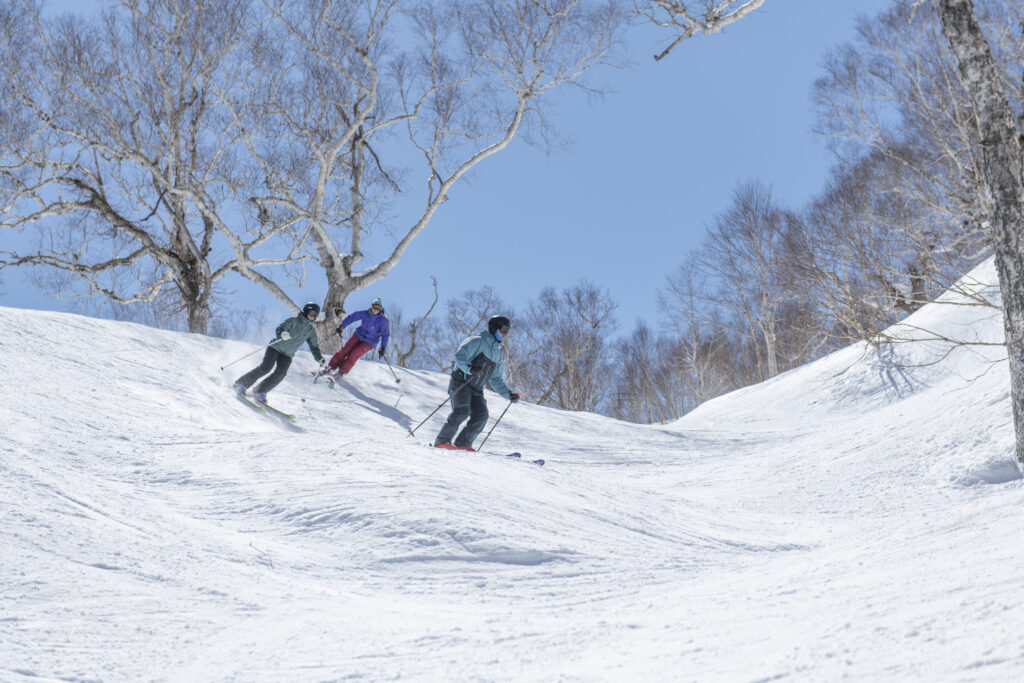Skiing is a thrilling sport that combines the beauty of nature with the excitement of gliding down snowy slopes. For beginners, learning to ski might seem daunting, but many basic ski moves can be mastered on your own.
7 Easy Ski Move You Can Easily Learn Alone
Here are seven easy ski-moves that you can practice by yourself to build confidence and improve your skiing skills.
1. Snowplow (Pizza) Turn
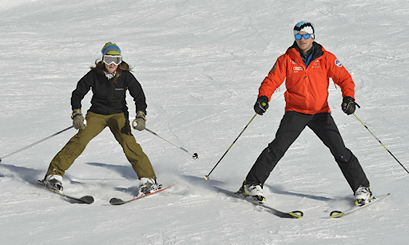
The snowplow turn, often referred to as the “pizza” turn, is one of the most fundamental ski move. It’s an essential skill for beginners, helping to control speed and direction on gentle slopes.
How to do it:
- Start with your skis in a wedge shape, tips close together and tails apart, resembling a slice of pizza.
- To turn left, apply pressure to the inside edge of your right ski. For a right turn, do the opposite by pressing the inside edge of your left ski.
- The more you press the edges and widen the wedge, the slower you will go.
- Begin on a gentle slope, practicing turning left and right in a controlled manner. Focus on smooth, gradual movements rather than sharp, jerky turns.
2. Parallel Turn
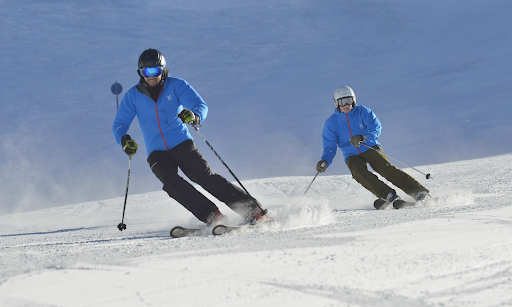
The parallel turn is a step up from the snowplow, allowing for more efficient and faster skiing. In this turn, your skis remain parallel to each other throughout the movement.
How to do it:
- Begin with your skis parallel and shoulder-width apart.
- To turn, shift your weight to the edges of your skis. For a left turn, press on the edges of your right ski and for a right turn, press on the edges of your left ski.
- Rotate your lower body and knees in the direction you want to go while keeping your upper body facing downhill.
- Allow your skis to naturally follow the rotation, maintaining parallel alignment.
- Start on gentle slopes and progressively move to steeper terrain as you gain confidence.
3. Side Slipping
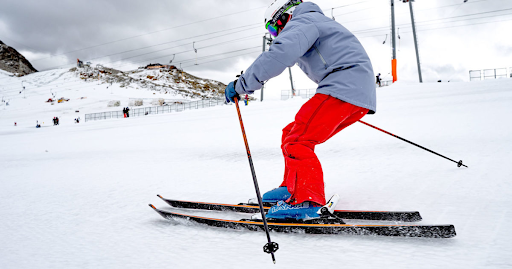
Side slipping is a technique used to descend a slope sideways. It is useful for controlling speed on steep terrain and for positioning yourself more accurately.
How to do it:
- Stand perpendicular to the slope with your skis parallel.
- Tilt your skis so the edges grip the snow lightly.
- Gradually release the edge grip by flattening the skis, allowing them to slip sideways.
- Use your body weight to control the slipping speed. To stop, apply pressure back on the edges.
- Work on the side slipping both directions and on different slopes to get comfortable with the technique.
4. Hockey Stop
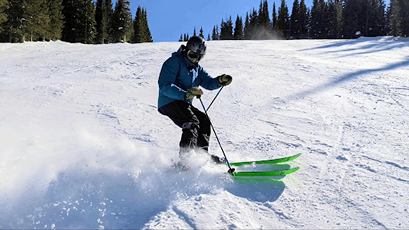
The hockey stop is a quick and sharp stopping maneuver that allows you to come to an abrupt halt, similar to how hockey players stop on ice. Mastering this technique is one of the essential ski moves for any skier looking to enhance their control on the slopes.
How to Do It:
- Gain Speed: Start by picking up a bit of speed on a gentle slope.
- Position Your Skis: Turn your skis sideways to the slope, applying pressure to the edges.
- Create Friction: Dig the edges into the snow to generate friction and come to a stop.
- Maintain Balance: Lean slightly uphill to maintain balance and avoid falling.
- Practice: Try the hockey stop in both directions, practicing until you can stop quickly and confidently.
Incorporating this maneuver into your skill set will not only improve your stopping ability but also make your skiing experience more enjoyable.
5. Stem Turn
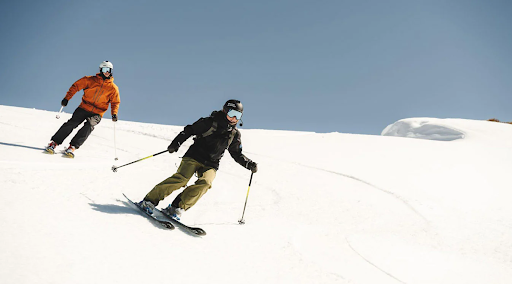
The stem turn, also known as a wedge turn, is an intermediate step between the snowplow and parallel turns. It involves starting in a wedge and ending in a parallel position.
How to do it:
- Begin in a snowplow position.
- Press down on the inside edge of the ski opposite to the direction you want to turn (left ski for right turn, right ski for left turn).
- As you turn, gradually bring the skis together to form a parallel position.
- Complete the turn with skis parallel, maintaining balance.
- Focus on smooth transitions and maintaining control through the turn.
6. Traversing
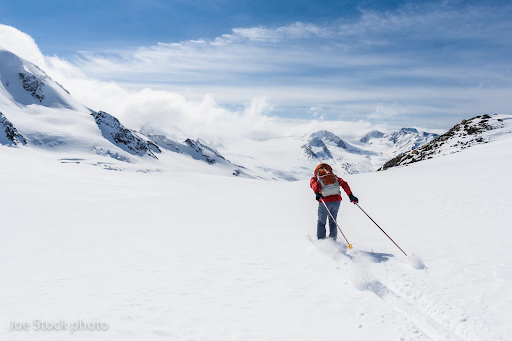
Traversing involves skiing across the slope rather than down it. It’s a great skill for managing speed and positioning yourself on the mountain.
How to do it:
- Stand perpendicular to the slope with skis parallel.
- Use a slight edge angle to grip the snow and push off with your poles.
- Lean slightly into the hill to maintain balance.
- Adjust the edge angle to control speed – more edge means slower speed.
- Traverse back and forth across the slope, practicing maintaining a consistent speed and balance.
7. Pole Planting

Pole planting is a technique used to improve timing, rhythm, and balance while skiing. It involves using your ski poles to aid in turns and stability.
How to do it:
- Hold your poles with a relaxed grip, arms slightly bent.
- As you initiate a turn, plant the pole on the side you’re turning towards (left pole for right turn, right pole for left turn).
- Use the pole plant to help guide your body through the turn, maintaining balance.
- Complete the turn, lifting the pole and preparing for the next plant.
- Work on coordinating pole plants with your turns on gentle slopes before progressing to steeper terrain.
Wanna Improve Your Ski Moves?
Learning to ski-moves can be a rewarding experience, especially when you start with these basic moves. Practicing these techniques alone can build your confidence, improve your control, and enhance your overall skiing experience.
Remember to always start on gentle slopes, gradually increasing the difficulty as you become more comfortable and proficient. As you continue to progress and seek to refine your technique, consider taking your abilities to the next level with Niseko ski lessons.
Our highly certified and experienced instructors focus on helping students reach their full potential on the slopes, ensuring a safe, enjoyable, and effective learning experience. Happy skiing!






